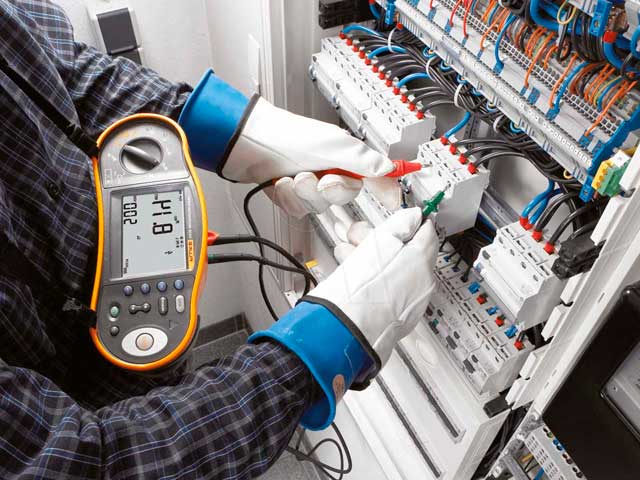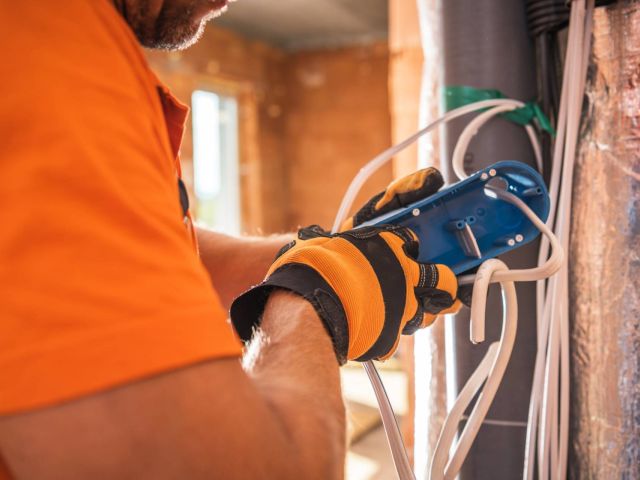In recent years, home electrical upgrades have gone beyond just rewiring and installing new outlets. With the rapid advancement of technology, modern homes are now equipped with innovative electrical solutions that enhance safety, improve energy efficiency, and add convenience. Whether you’re renovating, building a new home, or just looking to update your existing setup, staying on top of the latest trends can help you make the best decisions for your home. Here are some of the most notable trends in home electrical upgrades that are shaping the way we live.
1. Smart Home Integration
One of the most significant trends in home electrical upgrades is the integration of smart home technology. Homeowners are increasingly investing in smart lighting, thermostats, doorbells, and security systems that can be controlled remotely via smartphones or voice commands. Smart home integration not only provides convenience but also enhances security and energy efficiency.
- Smart Lighting: Smart lighting systems allow users to control lights remotely, set schedules, and even change colors to suit their mood or activity. Systems like Philips Hue and LIFX offer customizable lighting that can be integrated with other smart devices in the home.
- Smart Thermostats: Devices like the Nest Learning Thermostat and Ecobee SmartThermostat are popular for their ability to learn a homeowner’s schedule and adjust heating and cooling accordingly, which can lead to significant energy savings.
- Smart Outlets and Switches: Smart outlets and switches are gaining traction for their ability to control appliances and devices from anywhere. This not only adds convenience but also helps in managing energy usage effectively. If you are searching for new trends in home electrical upgrades, you may want to check out www.berkeys.com/electrician/usb-outlets/ for more information.
2. Energy Efficiency and Sustainability
As environmental awareness grows, more homeowners are seeking ways to make their homes more energy-efficient. Electrical upgrades that focus on sustainability are becoming increasingly popular.
- LED Lighting: LED lights consume significantly less energy than traditional incandescent bulbs and have a much longer lifespan. They are now available in various colors and styles, making them a versatile choice for any home.
- Solar Power Systems: Solar panels are becoming a common upgrade as more people look to reduce their reliance on the grid and lower their energy bills. Advances in solar technology have made panels more efficient and affordable, encouraging more homeowners to make the switch.
- Energy-Efficient Appliances: Upgrading to energy-efficient appliances, such as refrigerators, washers, and dryers, can greatly reduce a home’s overall energy consumption. Look for appliances with the ENERGY STAR label, which certifies that they meet strict energy efficiency guidelines.
3. Electric Vehicle (EV) Charging Stations
With the rise of electric vehicles, installing a home EV charging station has become a popular electrical upgrade. Having a dedicated charging station at home not only adds convenience for EV owners but can also increase the value of the property.
- Level 2 Chargers: Most homeowners opt for Level 2 chargers, which provide faster charging than the standard Level 1 chargers that come with most EVs. Level 2 chargers typically require a 240-volt outlet, similar to what is used for large appliances like dryers.
- Smart Chargers: Smart EV chargers offer additional features, such as remote monitoring, scheduling, and energy usage tracking. These features help in optimizing charging times to take advantage of lower electricity rates during off-peak hours.
4. Enhanced Electrical Safety
Safety is always a top priority when it comes to electrical upgrades. New technologies are making it easier to protect homes from electrical hazards.
- Arc Fault Circuit Interrupters (AFCIs): AFCIs are designed to prevent electrical fires by detecting dangerous arcing conditions in wiring. They are now required by code in many areas for new construction and major renovations.
- Ground Fault Circuit Interrupters (GFCIs): GFCIs are essential in areas where water and electricity are likely to meet, such as kitchens, bathrooms, and outdoor spaces. Upgrading existing outlets to GFCIs can prevent electrical shocks and improve overall safety.
- Surge Protection: Whole-house surge protectors guard against voltage spikes that can damage electronics and appliances. This upgrade is particularly important in areas prone to lightning strikes or power surges.

5. Power Backup Solutions
Power outages can be more than just an inconvenience—they can disrupt daily life and even pose safety risks. As a result, many homeowners are investing in power backup solutions.
- Home Generators: Standby generators provide a reliable source of backup power during outages. They are connected directly to a home’s electrical system and can automatically turn on when the power goes out, ensuring that essential systems, like heating, refrigeration, and medical equipment, stay operational.
- Battery Storage Systems: Battery storage systems, such as the Tesla Powerwall, are becoming popular for their ability to store excess energy generated by solar panels or during low-cost, off-peak hours. These systems provide backup power during outages and help homeowners maximize their energy usage.
6. Wireless and Touchless Controls
With the increasing emphasis on hygiene and convenience, wireless and touchless controls are becoming more common in home electrical systems.
- Motion Sensor Lighting: Motion sensor lights are not only convenient but also energy-efficient, as they automatically turn off when no motion is detected. They are ideal for areas like hallways, garages, and outdoor spaces.
- Voice-Controlled Systems: Integration with voice assistants like Amazon Alexa and Google Assistant allows for touchless control of lights, appliances, and other electrical systems. This trend is particularly appealing in kitchens and bathrooms, where hands-free operation can be a significant benefit.
7. Electrical Panel Upgrades
As homes incorporate more technology and electrical devices, the demand on electrical panels increases. Upgrading an old panel to a modern one with a higher capacity is a smart move, especially for those planning major renovations or additions.
- Smart Panels: Smart electrical panels offer advanced monitoring and control capabilities, allowing homeowners to track energy usage in real-time and identify potential issues before they become major problems.
- Expanded Capacity: Upgrading to a larger panel can accommodate additional circuits, which is essential when adding new appliances, installing a home office, or upgrading to a smart home system.
8. USB Outlets and Charging Stations
With the proliferation of smartphones, tablets, and other devices, having easy access to charging stations is a must. Upgrading to outlets that include built-in USB ports can help reduce clutter and make charging more convenient.
- USB-C Compatibility: As USB-C becomes the standard for many devices, outlets with USB-C ports are increasingly in demand. These outlets can charge devices faster and are versatile enough to handle a wide range of electronics.
Conclusion
The latest trends in home electrical upgrades reflect the growing demand for smarter, safer, and more energy-efficient homes. By integrating the latest technologies, homeowners can not only improve their quality of life but also increase the value of their properties. Whether you’re considering a major renovation or just a few small upgrades, staying informed about these trends can help you make the best choices for your home’s electrical system.




